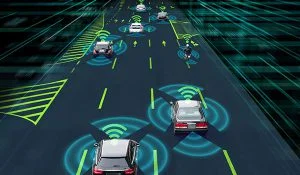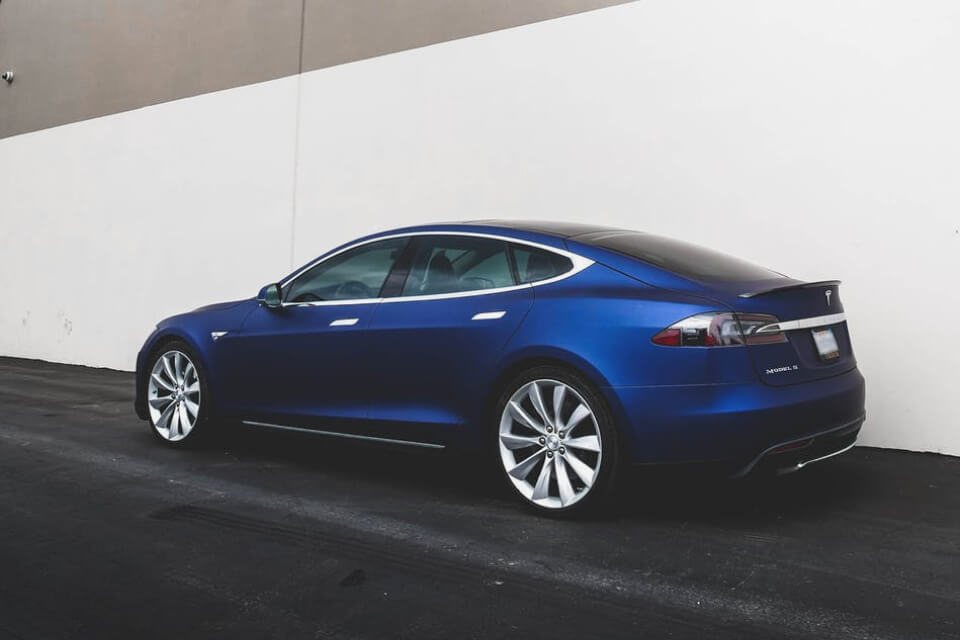The development of Next-Generation Vehicle Safety: AI-Powered Systems has revolutionized the automotive industry, bringing cutting-edge technology to enhance the safety of vehicles on the road. These advanced systems utilize artificial intelligence to analyze and respond to potential risks in real time, providing a new level of protection for drivers and passengers.
One of the most intriguing aspects of Next-Generation Vehicle Safety: AI-Powered Systems is the integration of machine learning algorithms that enable vehicles to continuously adapt and improve their safety measures based on real-world data. This allows for a more dynamic and responsive approach to accident prevention, setting a new standard for automotive safety. Additionally, the incorporation of advanced sensor technologies and predictive analytics further enhances the capabilities of these AI-powered systems, offering a comprehensive safety solution for modern vehicles.
1. Introduction to Next-Generation Vehicle Safety
Next-generation vehicle safety refers to the advanced technologies and systems that are being developed and integrated into vehicles to enhance the safety of drivers, passengers, and pedestrians. These systems utilize artificial intelligence (AI) and machine learning algorithms to analyze and respond to potential hazards in real-time, ultimately reducing the risk of accidents and injuries on the road.
From autonomous emergency braking and lane-keeping assistance to adaptive cruise control and pedestrian detection, next-generation vehicle safety systems are revolutionizing the way we think about automotive safety. These AI-powered systems have the potential to significantly reduce the number of traffic accidents and fatalities, making roads safer for everyone.
2. AI-Powered Collision Avoidance Systems
AI-powered collision avoidance systems use advanced sensors, cameras, and AI algorithms to constantly monitor the vehicle’s surroundings and detect potential collision risks. These systems can automatically apply the brakes, steer the vehicle, or alert the driver to take evasive action in order to prevent accidents. By analyzing data from the environment in real-time, AI-powered collision avoidance systems can significantly reduce the likelihood of rear-end collisions, pedestrian accidents, and other types of crashes.
Furthermore, these systems can also be integrated with vehicle-to-vehicle (V2V) and vehicle-to-infrastructure (V2I) communication technologies, allowing vehicles to exchange information and coordinate their movements to avoid collisions. As a result, AI-powered collision avoidance systems have the potential to greatly improve road safety and reduce the severity of accidents.
3. Adaptive Driver Monitoring Systems
Adaptive driver monitoring systems use AI to analyze the driver’s behavior, attention, and fatigue levels in real-time. By monitoring factors such as eye movement, head position, and steering patterns, these systems can detect signs of drowsiness or distraction and alert the driver to take corrective action. In some cases, AI-powered adaptive driver monitoring systems can even intervene by adjusting the vehicle’s settings or providing assistance to prevent accidents.
These systems are particularly beneficial for preventing accidents caused by drowsy or inattentive driving, which are significant contributors to road accidents. By continuously monitoring the driver’s state and providing timely alerts, adaptive driver monitoring systems can help reduce the risk of collisions and improve overall road safety.
4. AI-Based Predictive Maintenance Systems
AI-based predictive maintenance systems use machine learning algorithms to analyze data from the vehicle’s sensors and components, predicting potential failures or malfunctions before they occur. By monitoring factors such as engine performance, tire wear, and brake system health, these systems can alert drivers and maintenance professionals to take proactive measures to address issues and prevent breakdowns.
By enabling early detection of potential mechanical problems, AI-based predictive maintenance systems not only improve vehicle reliability and performance but also contribute to overall road safety. Preventing unexpected mechanical failures can help avoid accidents and breakdowns, ultimately enhancing the safety of drivers and passengers.
5. Enhanced Pedestrian Detection and Protection
Enhanced pedestrian detection and protection systems utilize AI-powered image recognition and sensor technologies to detect pedestrians and other vulnerable road users in the vehicle’s path. These systems can automatically apply the brakes, adjust the vehicle’s trajectory, or alert the driver to avoid collisions with pedestrians, cyclists, or other obstacles.
By accurately identifying and responding to the presence of pedestrians, AI-powered systems can significantly reduce the risk of accidents and injuries for vulnerable road users. As pedestrian accidents continue to be a major concern for road safety, the development and integration of enhanced pedestrian detection and protection systems are crucial for improving overall vehicle safety.
6. Autonomous Emergency Braking (AEB) Systems
Autonomous emergency braking (AEB) systems use AI algorithms and sensor technologies to detect potential collision risks and automatically apply the brakes to prevent or mitigate accidents. These systems can react much faster than human drivers, making split-second decisions to initiate braking when a collision is imminent, even if the driver is not actively responding.
By providing an additional layer of protection and intervention, AEB systems have been proven to significantly reduce the frequency and severity of rear-end collisions and other types of accidents. As a result, the widespread adoption of AI-powered AEB systems has the potential to make a substantial impact on road safety and save lives.
7. AI-Enhanced Traffic Sign Recognition and Interpretation
AI-enhanced traffic sign recognition and interpretation systems utilize computer vision and machine learning algorithms to identify and interpret traffic signs, signals, and road markings. By analyzing visual data from onboard cameras and sensors, these systems can provide real-time information to the driver about speed limits, stop signs, lane markings, and other important traffic regulations.
By assisting drivers in understanding and adhering to traffic rules and regulations, AI-enhanced traffic sign recognition and interpretation systems contribute to safer driving behaviors and reduced risk of accidents. Additionally, these systems can also be integrated with navigation and driver assistance features to enhance overall road safety and traffic management.
8. Future Prospects and Challenges of AI-Powered Vehicle Safety Systems
The future prospects of AI-powered vehicle safety systems are promising, with ongoing advancements in AI algorithms, sensor technologies, and vehicle connectivity. As these systems continue to evolve, they have the potential to further enhance road safety, reduce accidents, and improve the overall driving experience.
However, the widespread adoption and integration of AI-powered vehicle safety systems also pose challenges related to data privacy, cybersecurity, regulatory standards, and public acceptance. Addressing these challenges will be crucial in ensuring the successful implementation and deployment of next-generation vehicle safety technologies. As the automotive industry continues to embrace AI and machine learning, the development of advanced vehicle safety systems is expected to play a key role in shaping the future of transportation.
| Component | Description |
|---|---|
| Advanced Driver Assistance Systems (ADAS) | AI-powered systems that assist the driver in the driving process, such as lane departure warning and automatic emergency braking. |
| Collision Avoidance Systems | AI algorithms that can detect potential collisions and take preventive actions to avoid accidents. |
| Pedestrian Detection Systems | AI-powered sensors and cameras that can detect pedestrians on the road and alert the driver or autonomously apply the brakes if necessary. |
| Driver Monitoring Systems | AI systems that monitor the driver’s behavior and alertness, and can take control of the vehicle if the driver is incapacitated. |
| Autonomous Driving Technology | AI-powered systems that enable vehicles to operate without human input, potentially reducing the risk of human error. |
SONUÇ
Next-Generation Vehicle Safety: AI-Powered Systems utilize artificial intelligence to enhance vehicle safety through advanced driver assistance, collision avoidance, pedestrian detection, driver monitoring, and autonomous driving technology.



